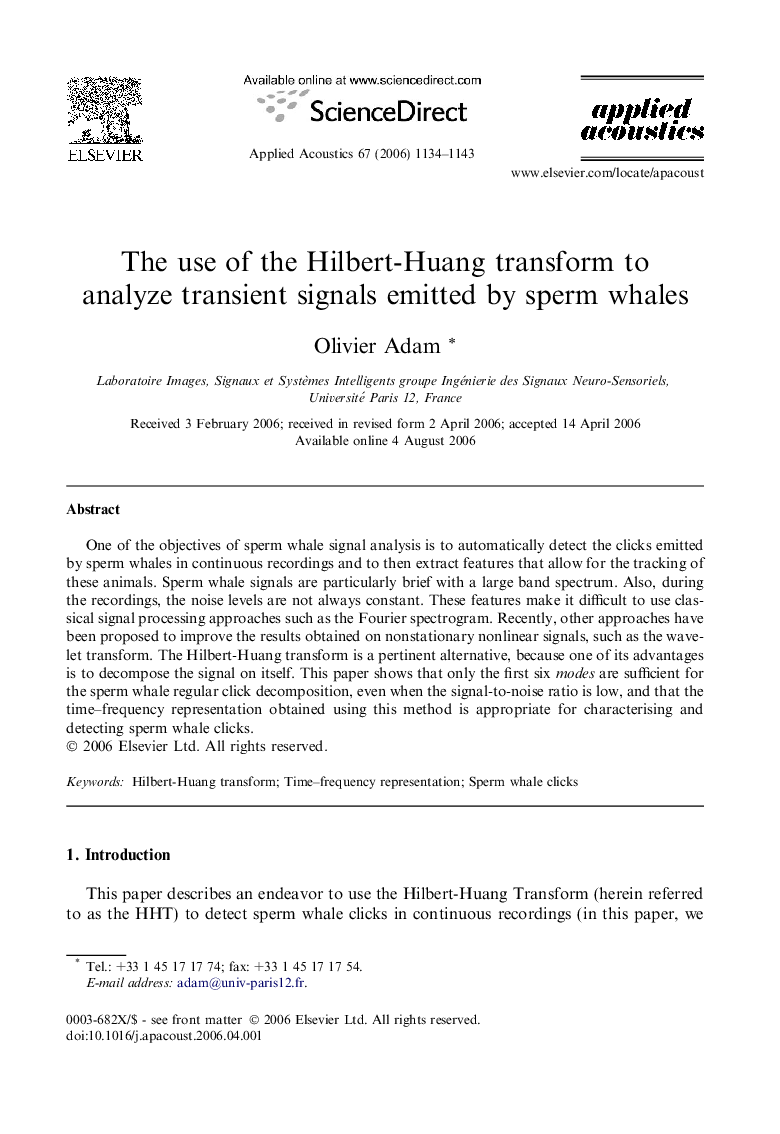| Article ID | Journal | Published Year | Pages | File Type |
|---|---|---|---|---|
| 755479 | Applied Acoustics | 2006 | 10 Pages |
One of the objectives of sperm whale signal analysis is to automatically detect the clicks emitted by sperm whales in continuous recordings and to then extract features that allow for the tracking of these animals. Sperm whale signals are particularly brief with a large band spectrum. Also, during the recordings, the noise levels are not always constant. These features make it difficult to use classical signal processing approaches such as the Fourier spectrogram. Recently, other approaches have been proposed to improve the results obtained on nonstationary nonlinear signals, such as the wavelet transform. The Hilbert-Huang transform is a pertinent alternative, because one of its advantages is to decompose the signal on itself. This paper shows that only the first six modes are sufficient for the sperm whale regular click decomposition, even when the signal-to-noise ratio is low, and that the time–frequency representation obtained using this method is appropriate for characterising and detecting sperm whale clicks.
